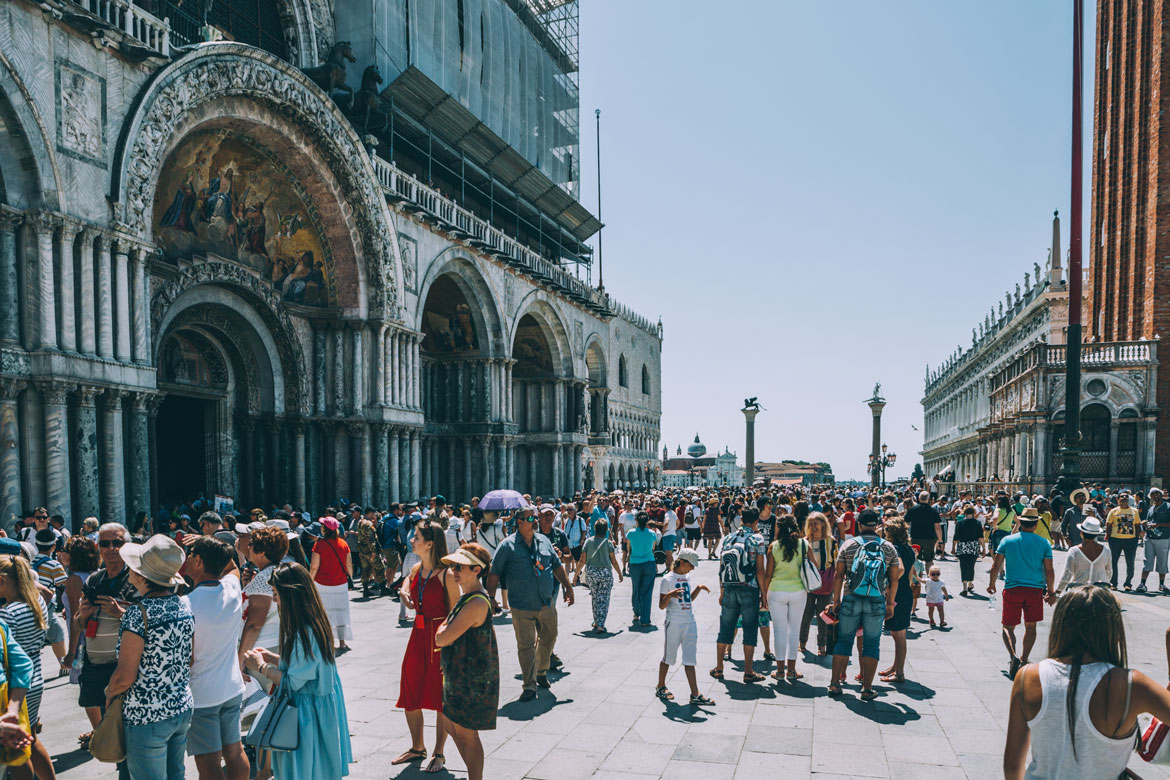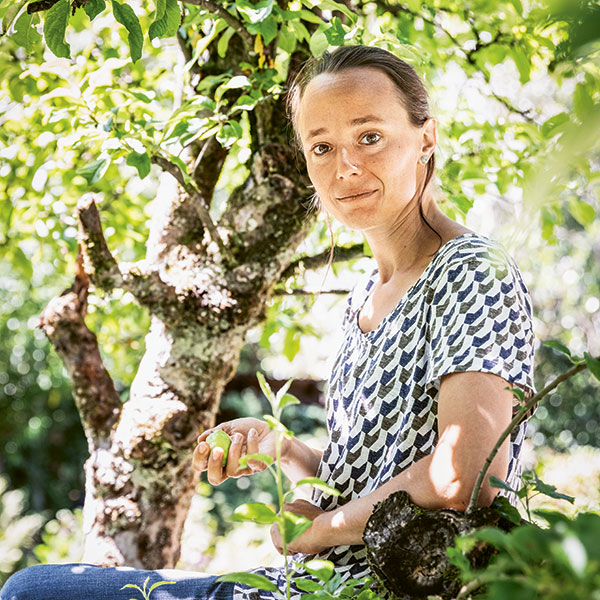Feature: The tourism of the future
When tourism becomes a burden
The negative consequences of ‘overtourism’ have in recent years become a hot topic of debate. But it’s about far more than just an excess of travellers.

Venice suffers more from overtourism than almost any other city. Over 10 million people come here every year. | Image: Massimiliano Clari / EyeEm / Getty Images
Recent discussions about ‘overtourism’ have become increasingly heated. The term is generally associated with the state of tourism in European cities and became a buzzword in around 2017 when the local populations of Barcelona and Venice began protesting against excessive numbers of outside visitors. But there’s no accepted definition of exactly what it entails.
3%
of Europe’s GDP was generated by tourism in the year 2021. In 2029 it was 4.3 percent, and in Croatia – the top of the pack – it was almost 12 percent.
The World Tourism Organization, UNWTO, describes it as “the impact of tourism on a destination, or parts thereof, that excessively influences perceived quality of life of citizens and/or quality of visitor experiences in a negative way”. For Paul Peeters, a tourism researcher at Breda University of Applied Sciences in the Netherlands, overtourism occurs primarily when the physical or ecological limits of a destination are exceeded, or when it oversteps the boundaries of its social capacity.
Lonely Planet gives way to Instagram
One of the most obvious characteristics of overtourism is the high number of visitors in a place – but it’s not the same as mass tourism, as is made clear in a recent study by the European Commission. Overtourism, it states, is “better understood in relative, rather than absolute, terms”. There are undoubtedly destinations that can cope well with large numbers of visitors, whereas smaller or newer destinations (or mountain regions) more often reach the limits of what they can cope with.
The causes of this excess are multifarious, with low-cost airlines and online booking platforms making it easier and cheaper to travel. Cruise ships are carrying ever more people across the seas, and the rapid increase in private holiday letting has also been playing a decisive role. According to Sina Hardaker, an economic geographer at the Julius Maximilian University of Würzburg, a study by experts has proven that “platforms such as Airbnb are not just increasing accommodation capacity, but are also changing the morphology of a city. In other words, they are changing the way a city develops and is structured. “Overtourism thus also has a lot to do with how tourists are increasingly intruding into residential areas”. This theory would seem to be supported by the fact that there is comparatively little resentment towards this phenomenon in cities such as London. “The local population there isn’t confronted with tourism in the same way as they are in Barcelona or Lisbon”, says Hardaker. Most Londoners live far away from the tourist hotspots because living in the city centre has long been unaffordable to most of them.
965
million tourists
were on the road back in 2022. In 2019, it had been 1.5 billion.
According to Hardaker, international online platforms bring another problem with them. “Such platforms present themselves as neutral intermediaries, which serves to obscure their influence on destinations and legitimises the fact that they often manage to evade assuming any local responsibility”. For one thing, these digital companies are physically intangible. Some of them possess neither their own accommodation nor any physical offices that one might visit to ask them questions. And it is almost impossible to measure their actual impact. To what extent does Google Maps actually reduce a city to the sights, shops and services that are listed there? How many people visit the rice terraces of Bali just because they’ve seen pictures of them on Instagram? To be sure, tourists in times past would often consult the same edition of Lonely Planet and end up visiting the same attractions too. “But you can’t compare the possible readership of a travel guidebook with the networking impact of a platform like Instagram”.
Searching for solutions in Venice, Paris and Amsterdam
The effects of overtourism are similarly complex. According to Fabian Weber, a researcher into tourism at the Lucerne University of Applied Sciences and Arts, the most obvious effect is the crowds of people you see in public spaces. Piazzas are overflowing, beaches are full, and there are long queues in front of museums. Other consequences are not immediately visible, however – such as the creeping process of touristification, which we can observe, for example, when a neighbourhood has a dozen souvenir shops where a butcher’s or other shops used to be. Excessive tourism also manifests itself in rising property prices and higher living costs.
Venice is probably the place where the consequences of this overload have been more concentrated than anywhere else. In a handbook he’s co-edited on the topic, Sebastian Amrhein of the Rhine-Waal University of Applied Sciences has written of how the locals in Venice were already getting upset about tourists clogging up the public squares back in the 18th century. But the numbers have exploded in the last twenty years. More than 10 million people visit Venice every year, making it one of the most popular tourist destinations in the world.
1.4
billion US dollars
was the income generated by international tourism in 2023. In 2019, it had been USD 1.5 billion.
But conversely, the local population in the historic centre of the city has been shrinking for decades. Many of them have left, not just because of the increasing cost of renting an apartment, but also out of resentment. Cruise ships are a burden on Venice and its canals in all sorts of ways. In a literature review in 2019, researchers found that not only do they damage the ecosystem and the structure of buildings, but they also fail to generate any lasting local prosperity. Their passengers flood the city within a very short space of time, but hardly spend any money there.
The local authorities of Venice have clearly recognised the problem, says Hugues Séraphin from Oxford Brookes University, who has co-edited a book on the “causes, implications and solutions” of overtourism. Day visitors will no doubt soon have to pay to enter the city, and the big cruise ships have been banned from docking in the centre. “These strategies probably won’t have much of an impact, however”, says Séraphin. He believes that most of the measures taken are too focused on the short-term, and only succeed in shifting the problems elsewhere: “The main problem is this: Everyone in Venice lives from tourism”, he says. Certain professions – like the gondoliers – are extraordinarily well organised and exert a corresponding influence on local politicians.
2.2
million beds for guests
This was Italy’s tourist capacity in 2021, more than any other European country.
Séraphin is convinced that the long-term solution to overtourism lies quite obviously in achieving a better distribution of the flow of visitors. Its effects rarely manifest themselves over an entire city or throughout the whole year, but are concentrated instead in certain neighbourhoods, during certain seasons or on certain days of the week. It’s the responsibility of our political decision-makers to manage tourism better in terms of both geography and time. In France, for example, the historical theme park Puy du Fou in Les Epesses has succeeded in creating a major tourist attraction in a somewhat remote region of the country. This relieves the pressure on must-see destinations such as Paris, but also has a broader impact, says Séraphin: “Regions that are economically and socially weaker also benefit. It’s not about abolishing tourism”.
According to Weber, Amsterdam is similarly trying to market both the city itself and its surrounding area as a single, connected destination. “It starts with how you name it”, he says. For example, Muider Castle, which lies just under half an hour’s drive from Amsterdam, is now referred to as ‘Amsterdam Castle’, while the seaside resort of Zandvoort is called ‘Amsterdam Beach’.
No impact without the political will
Weber has also noted how things are changing for cruise ships and in the accommodation sector. Iceland, for example, has issued stricter emissions regulations and has installed on-shore electric power systems for ships so that they don’t have to run their engines when in harbour. Barcelona is no longer issuing new licences for hotel construction, and is tightening up the regulations for renting out private holiday apartments.
But Weber is also sceptical about just how much of an impact this will have. It’s true that this could take the pressure off individual neighbourhoods, he says. But it’s unlikely to change the overall number of tourists. “Barcelona will remain a very popular city”, he says. What’s more, the question as to how much tourism is ‘too much’ will be decided not just by the number of visitors to a destination, but also by their behaviour – especially in places like Barcelona, Amsterdam and Mallorca.
5€
is what Venice wants to charge day visitors in future. There’ll be test runs on 29 days in 2024, with the fee introduced permanently in 2025.
The example of Mallorca shows the extent to which the success of such measures ultimately depends on a destination demonstrating the necessary political will. Amrhein believes that the regulations that were introduced there in recent years could have had a considerable impact – but after the elections of May 2023, most of them were cancelled immediately. “The new government is once more focussing on growth”.




